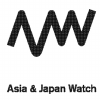* * *
After the nuclear crisis broke out at the Fukushima No. 1 nuclear power plant on March 11, 2011, a special "shadow unit" of the Self-Defense Forces got the call to mobilize for a secret mission.
The Ground Self-Defense Force’s Central Readiness Regiment (CRR) is one of the SDF's special units whose operations are shrouded in secrecy and "invisible" to the public.
When the SDF participates in United Nations’ peacekeeping operations, the CRR is the first to be dispatched to the operation site. The unit makes preparations for billeting and guarding ahead of the start of peacekeeping operations. Members of the unit regularly receive vigorous physical training to be ready for contingencies.
On March 19, 2011, Col. Kazunori Yamaguchi, the 48-year-old commander of the CRR, was at the GSDF’s Camp Koriyama in Fukushima Prefecture. At 9 p.m., when he returned to his desk, Yamaguchi found a telephone message from an officer at the Defense Ministry’s Ground Staff Office.
“We have something to discuss," it said. "Call me.”
On that day, the Tokyo Fire Department’s Hyper Rescue team had been continuously spraying water on the overheating No. 3 reactor at the disaster-stricken nuclear power plant. Yamaguchi thought it must be something related to the ongoing nuclear crisis. Since water had started being poured into the crippled reactors, he assumed that his unit would be assigned to an even tougher mission.
As he called the Ground Staff Office, Yamaguchi found that he had guessed correctly.
“We are considering a plan to deal with the worst possible situation at the nuclear plant,” said the officer. “That would involve rescuing the Tokyo Electric Power Co. employees who would have been left behind (within the compound).”
The proposed mission to rescue TEPCO employees would probably force Yamaguchi’s team to head into the accident site amid high levels of radiation. “Would it be safe?” Yamaguchi asked despite himself. The answer was not quite reassuring. “I … would guess so.”
When the phone conversation was over, the Defense Ministry officer told Yamaguchi to keep the mission secret.
The reason for the secrecy was fear that disclosure of the mission would provoke anxiety and speculation among the public. Even now, information about the mission is still being kept from the public.
Details of the mission dribbled out bit by bit from senior officials at the Defense Ministry through interviews. Through them, contours of the plan gradually emerged.
The 700-man-strong CRR was created in 2008 and is headquartered in the GSDF’s Camp Utsunomiya in Tochigi Prefecture. It comprises four companies, including infantry companies equipped with armored fighting vehicles and mortars.
Yamaguchi’s unit was dispatched to Camp Koriyama on March 17, two days before the phone call for him came in.
The unit helped evacuate residents living between 20 and 30 kilometers from the disaster-stricken nuclear power plant. But Yamaguchi was convinced that there were tougher tasks in store for his squad.
In the dead of night on March 19, shortly after the telephone conversation, eight-wheeled armored personnel carriers mobilized from SDF bases all over the country began to arrive at Camp Koriyama.
These armored vehicles are equipped with eight special reinforced tires that can keep the vehicle running even when they have blown out. They are used for land transport of personnel at a maximum speed of 100 kilometers per hour.
The rescue plan called for the unit’s entry into the nuclear plant compound no matter what was happening there to save dozens of workers. That required converting the vehicle for the mission.
The rescued workers would be carried on the roof to spare the time needed for them to get into the vehicle and finish the mission as quickly as possible. To ensure that the rescued workers could climb up onto the vehicle’s roof quickly, a step was attached to the front while a handrail was fixed on the roof. Two ropes with knots at intervals of 50 centimeters were hung from the roof.
A loudspeaker was also installed to make the vehicle’s arrival known to the workers. The driver’s station was covered with a protective sheet to shield the crew from radiation.
Early March 20, a formal order was issued. Yamaguchi’s unit was ordered to carry out four tasks: preparing meals; communications support; search for missing victims; and “various support” in response to the needs of organizations concerned.
The “various support” cited last referred to the rescue mission.
Yamaguchi found it hard to eat as he wondered how he should explain the mission to his men.
At 8 a.m., Yamaguchi briefed 220 members of the unit about the mission at an exercise area where they were quartered.
“We will carry out tasks assigned to us, with the principal focus on rescuing TEPCO employees in an unforeseen emergency,” he said. “Don’t fear or underestimate the crisis.”
The unit members were standing in silence on the grounds, which was slushy with melting snow.
Yamaguchi told them to say nothing about the mission to anyone and called it a night.
“This is going to be a long operation. Take a bath and rest for what starts tomorrow.”
(This article was written by Hidefumi Nogami and Hiroyoshi Itabashi.)

